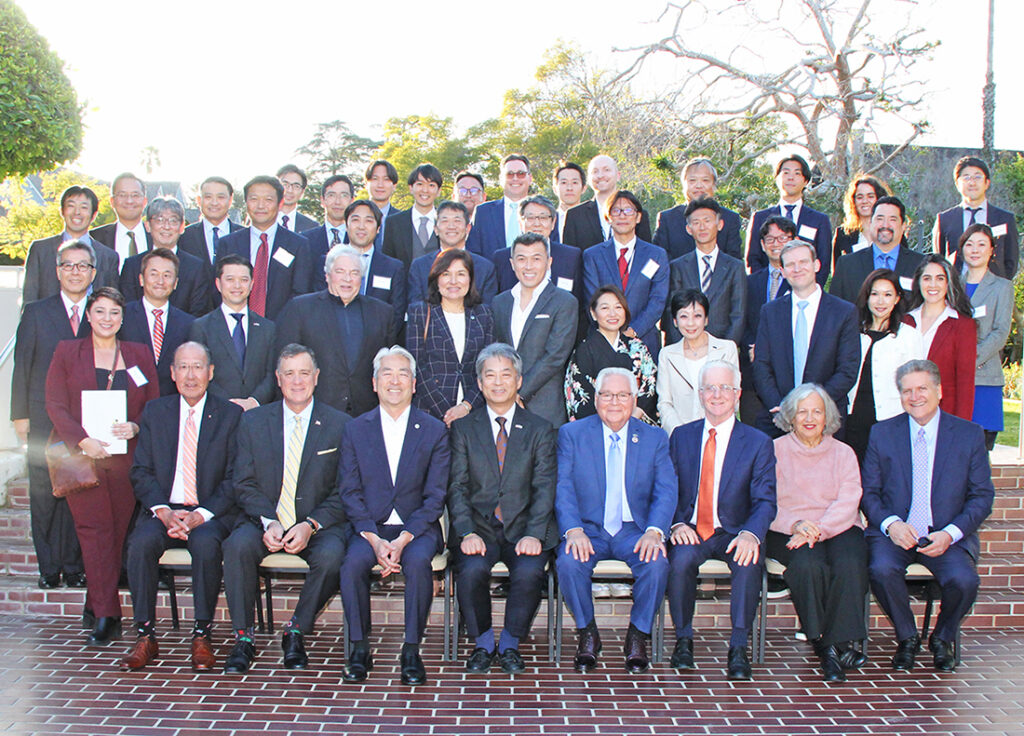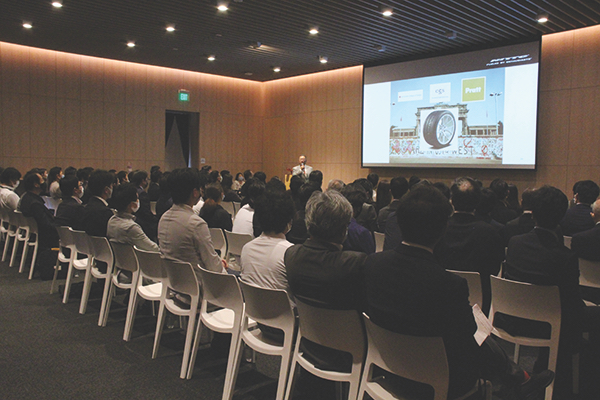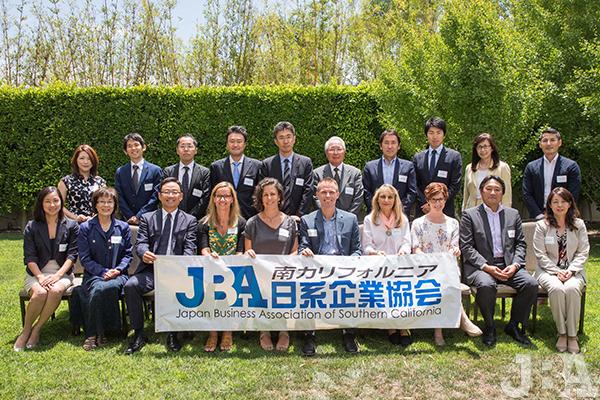 This year’s USEJ participants and JBA members
This year’s USEJ participants and JBA members
On July 19, the 2017 U.S. Educators to Japan (USEJ) Program Review Meeting was held at the Miyako Hybrid Hotel in Torrance. Five American teachers who participated in the program gathered and reported on their experience in Japan in front of JBA members and affiliates.
Report on the difference between Japan and the US from their own perspective
Recognizing the enrollment of Japanese children living overseas in America, the USEJ Program aims to promote understanding of Japan and Japanese culture.
Every year, JBA chooses educators from schools in Los Angeles, South Bay, and Orange County, this year, 8 were chosen to visit Japan on an itinerary spanning from June 18 to June 29. The participants visited Tokyo, Hiroshima, Nara, and Kyoto and learned about Japanese culture and education.
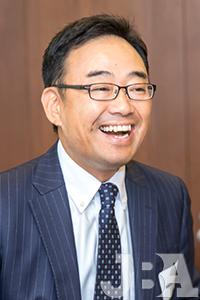
From the 8 participants, five were in attendance at the Review Meeting. First, Education and Cultural Committee Chair Hideaki Amasaki gave an opening speech and noted the success of the program, which has sent 500 educators to Japan. In addition, the JBA Foundation Charity Golf Tournament, which funds the USEJ Program, was reported to have been a great success this year as well. He further stated that the video journal of the trip was screened at the Award Dinner after the Golf Tournament on July 15, which allowed the participants of the tournament to gain a deeper understanding of the USEJ Program.
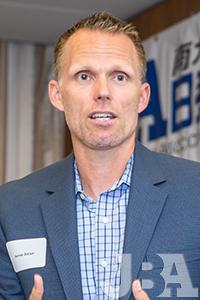
Next, the participants presented their experience during the visit to Japan. First, this year’s group leader Mr. Aaron Jetzer (Culverdale Elementary School, Irvine) began his presentation. After expressing his gratitude to JBA, he summarized his experience by stating, “Japan is a very kind and polite country.” He stated he gained an impression that Japanese people hold proudly their traditions and culture, and furthermore, from the perspective of his current role as Principal, expressed his thoughts on the differences between Japan and the U.S.
“There were a lot of great teachers in Japanese schools, but the Principals did not come to the front as often. I am also the Principal of my school, and it also took me a while to build relationships with my students and their parents. But now, I believe firmly in my heart that it is important to ‘Be visible and seen.’ The Principal is not a special position but just one of many teachers who work to give students the best educational opportunities. I feel that in Japan as well, “Be visible and seen” would also be good for Principals.”
In addition, when conversing with a certain female Japanese student, Mr. Jetzer learned about her daily life, which includes school attendance, extra-curricular activities, and homework, and also about the importance of school and personal time balance.
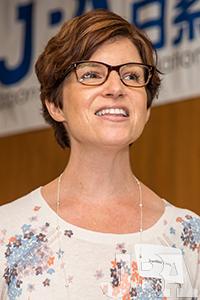
Next, Ms. Justine Lang (Arnold Elementary School, Torrance) gave her presentation. For her, the greatest takeaway from the USEJ Program was that Japanese society was founded on respect and appreciation for culture, tradition, nature, and regional specialties. Also, from the experience of demonstration lessons held at Japanese schools, she learned that gestures such as nods, smiles, and high-fives have more importance than words. She believes that gestures allows students to have a feeling that “teachers care about them” and that gestures are indispensable tools for smooth communication, especially to students all over the world who are not good at English.
The USEJ Program is for continuing education
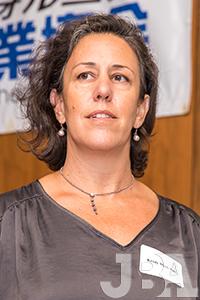
Next to take the stage was Ms. Kristy Mack-Fett (Ocean Charter School, Los Angeles), who said it seemed that Japanese elementary school students enjoyed great freedom. “However, as soon as they enter junior high school, they become busy with studying and cram school to prepare them for their future, as if they are being chased by the reality of society. Of course, there is the tendency to do the same in America, where it can be hard to prepare for college, but I think while they think about themselves, they can also find the time for their own lives.”
In America, it is easy to create enthusiasm and motivation by taking risks in life, but in Japan you must take care with everything you do. Students can draw how they want their own future by finding the balance between the two, she emphasized.
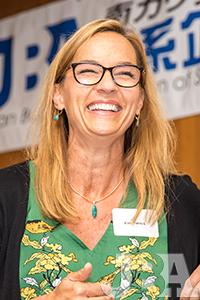
Next came the presentation from Ms. Kim Patrick (Jeffrey Trail Middle School, Irvine). First of all, she was moved by Japanese people’s kindness and consideration for others, and as a History teacher herself, was impressed with the visits to Nara and Kyoto. Something that especially made an impression was Yatadera in Nara Prefecture, where she was taken to by her host family. The azaleas were in full bloom as it was June, and it was her first time seeing such a beautiful view.
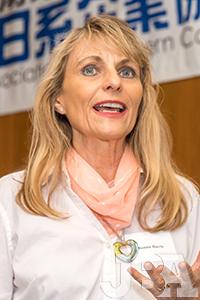
Finally, Ms. Bonnie Harris (College Park Elementary School, Irvine) used images on slides in her presentation. Through the use of many pictures, she introduced the program and the places she visited during her stay. During a visit to a school, she observed the Japanese school lunch system, which is not available in the U.S. She was impressed by the students’ responsibilities of serving and tidying up after themselves. In addition, she also talked about her visit to the Hiroshima Peace Memorial Park and the Hiroshima Peace Memorial Museum. Thanks to the Museum’s guide and atomic bomb survivor’s stories, she was able to learn and experience something that cannot be found in an ordinary tourist’s experience: an enriching lesson on the impact of the atomic bomb on humanity and the meaning of nuclear weapons in the future.
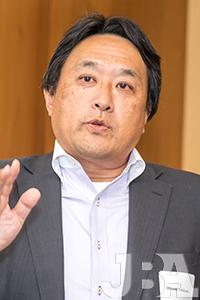
At the end of the five presentations, JBA President Hitoshi Ishikawa gave concluding remarks. “Each of your presentations had such enthusiasm, and I as a Japanese was able to rediscover Japan. In addition, I think you can gain a deeper understanding of Japanese families and students in America from what you learned about the differences between Japan and the US. At the same time, the continuation of USEJ and its value was understood. Above all else, I’m glad you all enjoyed your time on the program.”
After that, lunch was served across multiple tables and the participants were able to share what experiences they did not discuss during their presentations.
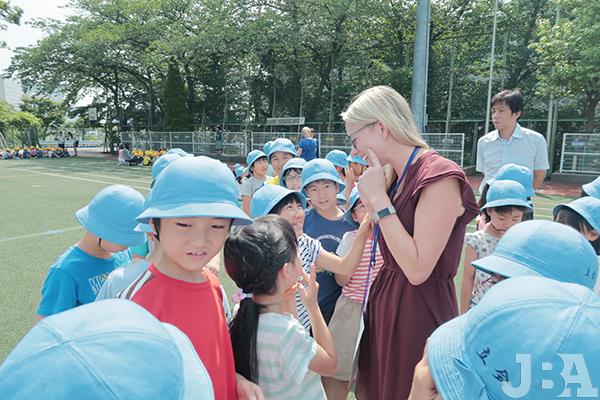 Communication with Japanese elementary school students while incorporating gestures
Communication with Japanese elementary school students while incorporating gestures
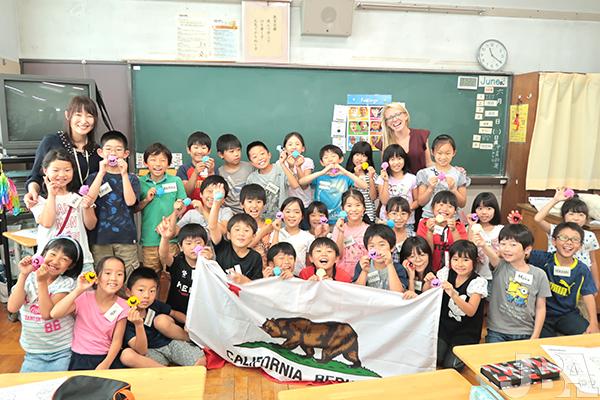 Putting into practice the demo lesson from a visit to a Japanese elementary school
Putting into practice the demo lesson from a visit to a Japanese elementary school

